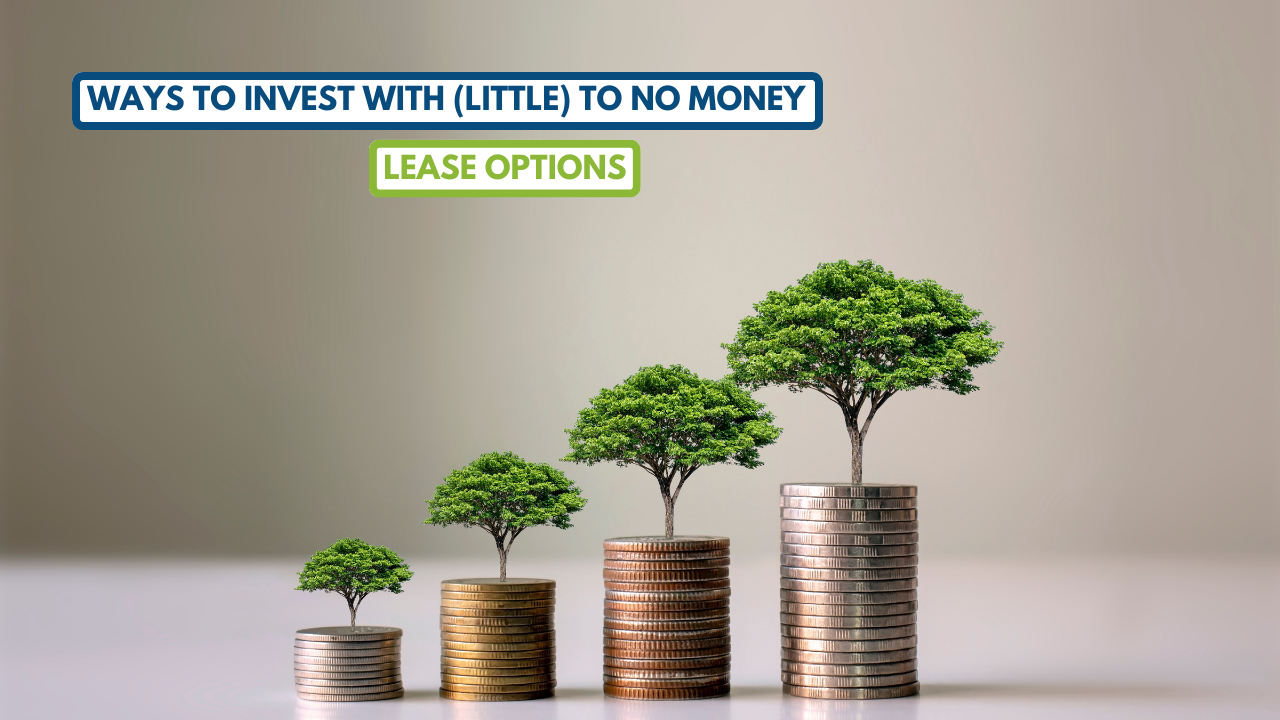The Power of Lease Options in Real Estate Investing
Buying a Home with No Down Payment
Uncover how lease options can help you achieve your dream of homeownership without breaking the bank. Learn how to negotiate with motivated sellers, structure your lease option contract, and make your rent payments work for you. Don't let a lack of down payment funds hold you back from owning a home - explore the lease option strategy today!
Stay tuned for our five-part series where we discuss the top investment strategies!
More of a reader? Catch the video transcript below!
Welcome to part two of my five-part series on investing in real estate with little to no money.
Missed the others? Binge those videos and blog posts here:
Part One: How to Make a Profit With Wholesaling
Part Three: How to Partner Up and Profit Big
Part Four: How to Fund Your Deals with Hard Money Loans
Part Five: How to Fund Your Deals With Crowdfunding
Today, we’re talking about the power of lease options when it comes to investing in real estate with little or no money down.
What is a lease option?
A lease option (also known as a “rent-to-own” agreement) is a lease agreement that includes an option for the tenant to purchase the property from the landlord at a specific, predetermined time period.
So, say you’re renting the house and you work out a deal with a landlord in which you’ll pay $500,000 for the home, but you’ll rent it for two years at a premium price that is going to go toward the down payment.
What are the main things to consider when it comes to lease options?
The Landlord May Want a Deposit Upfront
In some cases, the landlord might want a little bit of money upfront. So you might say, “Hey, landlord, I’ve got $5,000 in my savings account. I’ll throw you that plus $500 above market rent per month for the next two years.”
$500 a month for two years is $12,000. That plus the $5,000 deposit you put down equals $17,000 that you can put toward your down payment when it comes time to buy the home. $17,000 is a little over 3% of the $500,000 home price, which is enough for a down payment in some mortgage options.
You Don’t Know What the Future of the Market Looks Like
You and the landlord came up with this agreement for you to purchase the property in two years at $500,000. The thing is, you don’t know what the market is going to look like in two years.
If the market value goes up and the house is worth $525,000 in two years, great! You’ve gained that extra $25,000 in equity. If the opposite is true and it goes down to $475,000, you have two choices: you can overpay for the property or you can back out of the agreement with the landlord — but if you back out, they get to keep the money that you’ve overpaid them the past two years. In our example, that’s $17,000 that the landlord would walk away with if you backed out.
So, you just have to make sure you have a decent understanding of what the property value is today and a reasonable forecast for what it might do in the future. Now, none of us can predict these things perfectly, but when you’re structuring these deals, you have to at least try to understand what the market value is today and try to forecast it in the future so you have a more complete picture of the risk and reward.
You Might Want to Save That Extra Money for a Down Payment on a Different Property in the Future
What if you’d rather keep that $5,000 deposit in your savings account and stash away that extra $500 a month premium for a couple years in order to come up with your own down payment to purchase whichever property you want, right? This is definitely something to consider.
So, why would someone want to do one of these rent-to-own situations when they could just save the money? Well, there are a few different situations in which lease options are advantageous.
In some cases, a tenant has been renting a home for a little while and they love the house. They decide they want to buy it from the landlord. The landlord may come back and say, “I’m not ready to sell this house right now, but I’ll agree to a predetermined price right now and I’ll sell it to you in two years.”
Another reason is that you’re working on getting your finances in order to buy a home. You can’t afford to purchase today, but you want to negotiate something today and have a plan in place for the future.
There are a variety of reasons why someone might want to execute a lease option, but also keep in mind that if you’re giving that money to the landlord to save for you, consider just saving it for yourself and just going the normal down payment route.
Make Sure the Contract is Ironclad
And finally, you’ll want to make sure your contract for the lease option is bulletproof.
Review it with your attorney to make sure that you understand the terms and conditions and that they are beneficial to you.
And never, ever, ever do something like this in a “handshake deal”. I’ve seen so many people in real estate get screwed over by making a handshake deal instead of getting something in writing. So, make sure your agreement is ironclad.
Also, of course, make sure you’re working with a real estate agent that can walk you through what the market value is today and what they think the market’s going to do in the future.
So, that’s going to be it for me today, guys! See you in part three all about real estate partnerships!
Brent Edwards (aka Brent the Broker) is a residential real estate agent and Realtor in San Diego, CA who helps clients buy and sell homes in San Diego, California and all surrounding areas. Brent is a highly-recommended Realtor in San Diego by family, friends and past clients. Call Brent today at 619-550-8070 if you have any questions about real estate in San Diego or you'd like to buy or sell a home.





